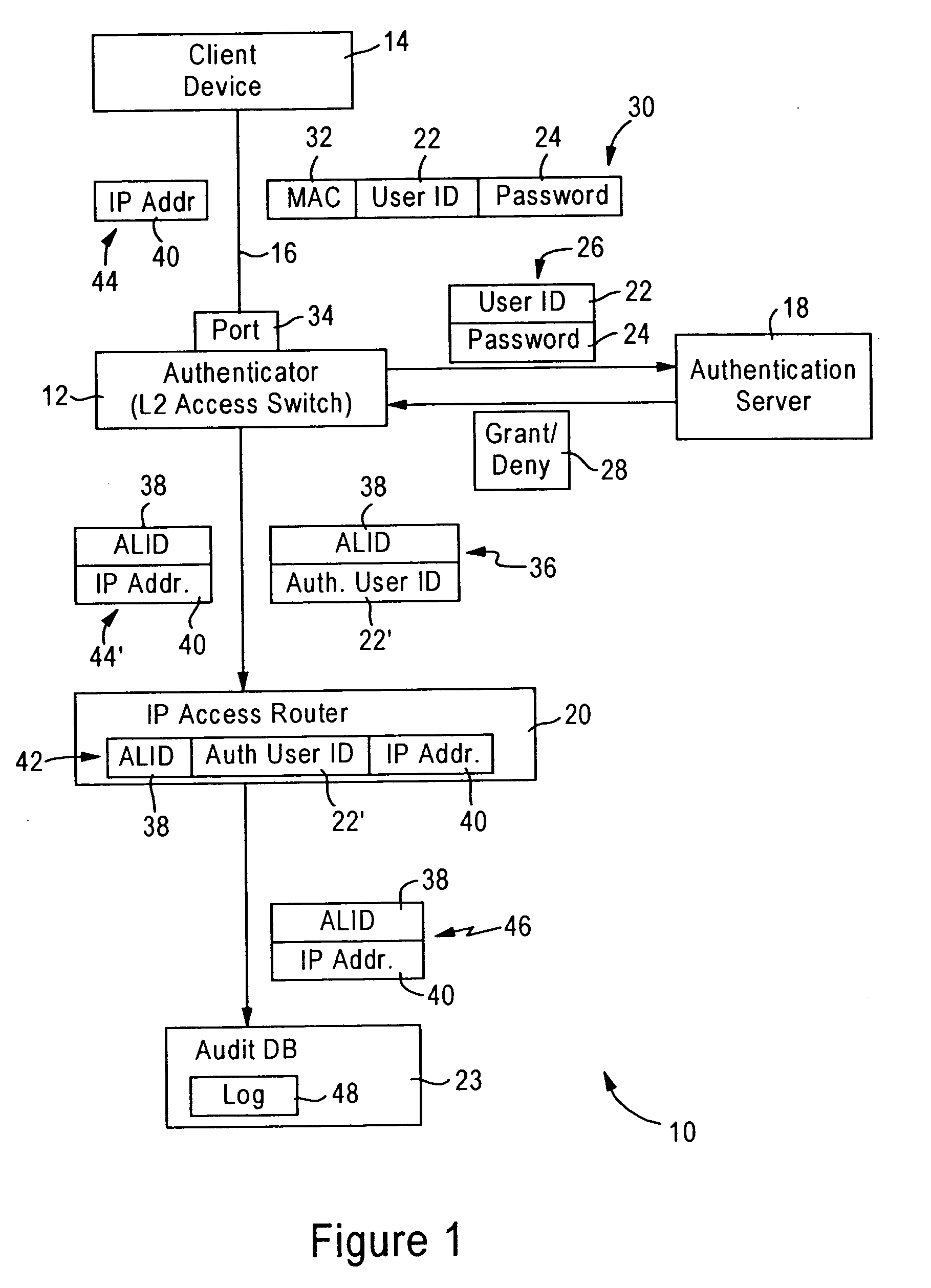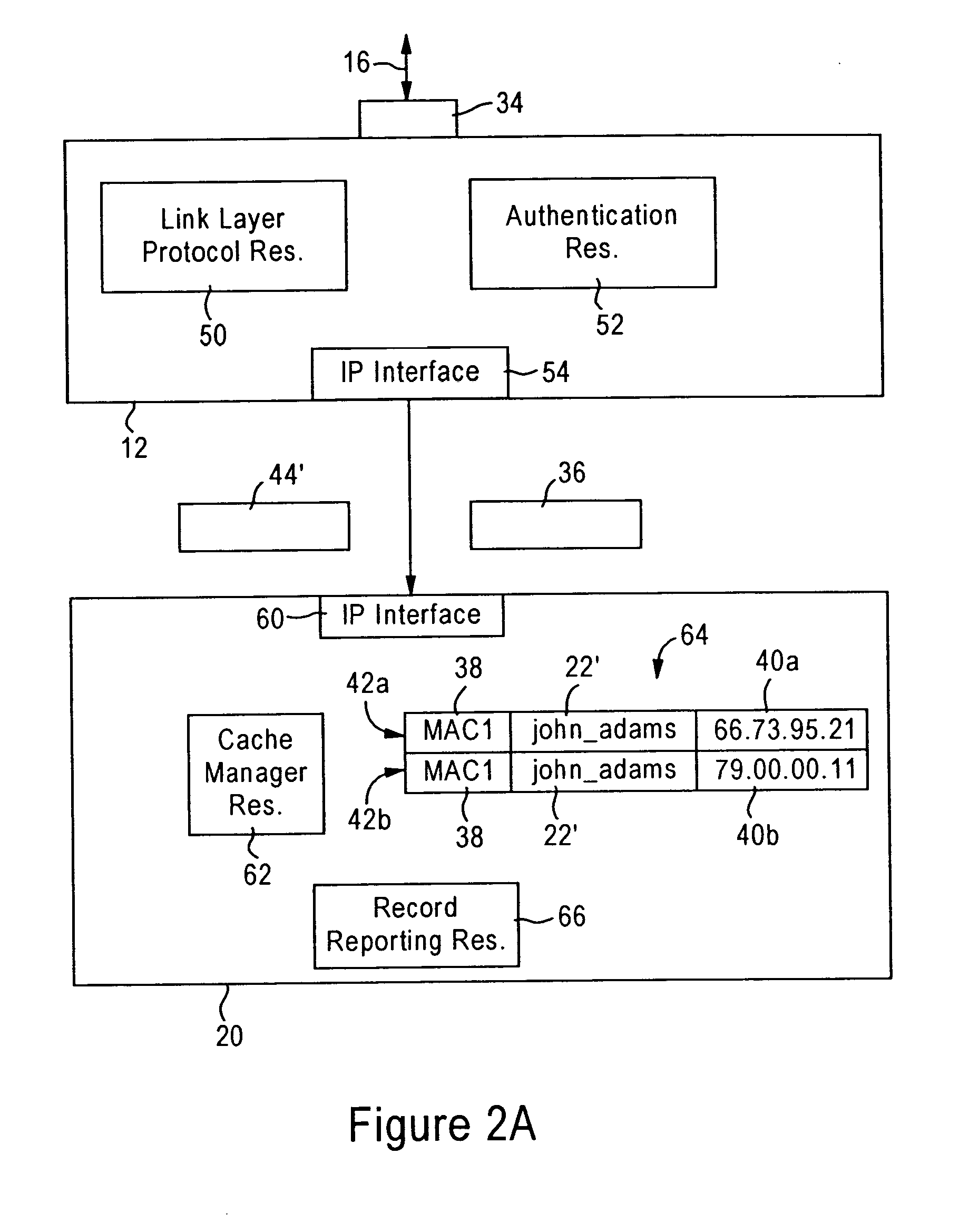Arrangement for tracking IP address usage based on authenticated link identifier
a technology of authenticated link and configuration, applied in the field of management of internet protocol (ip) addresses, can solve the problems of inability to identify the source of attacks, no audit trail preserved, network state not preserved for future analysis
- Summary
- Abstract
- Description
- Claims
- Application Information
AI Technical Summary
Benefits of technology
Problems solved by technology
Method used
Image
Examples
Embodiment Construction
[0023]FIG. 1 is a diagram illustrating a network 10 configured for providing link layer authentication for a client device 14, and creating audit logs for tracking of IP addresses used by the client device 14, according to an embodiment of the present invention. The network 10 includes an link layer authentication device (i.e., authenticator) 12, an authentication server 18, an IP based access router 20, and an audit database 23.
[0024] The authenticator 12 is configured for detecting establishment of a link 16 with the client device 14 on an identified link port 34. As described below, the authenticator 12 is configured for authenticating the client device 14 based on sending an authentication request 26 specifying a client identifier (e.g., an entity identifier) 22 and password 24 to an authentication server 18.
[0025] In response to receiving an approval 28 from the authentication server 18, the authenticator 12 is configured for outputting to the access router 20 an authenticati...
PUM
 Login to View More
Login to View More Abstract
Description
Claims
Application Information
 Login to View More
Login to View More - R&D
- Intellectual Property
- Life Sciences
- Materials
- Tech Scout
- Unparalleled Data Quality
- Higher Quality Content
- 60% Fewer Hallucinations
Browse by: Latest US Patents, China's latest patents, Technical Efficacy Thesaurus, Application Domain, Technology Topic, Popular Technical Reports.
© 2025 PatSnap. All rights reserved.Legal|Privacy policy|Modern Slavery Act Transparency Statement|Sitemap|About US| Contact US: help@patsnap.com



